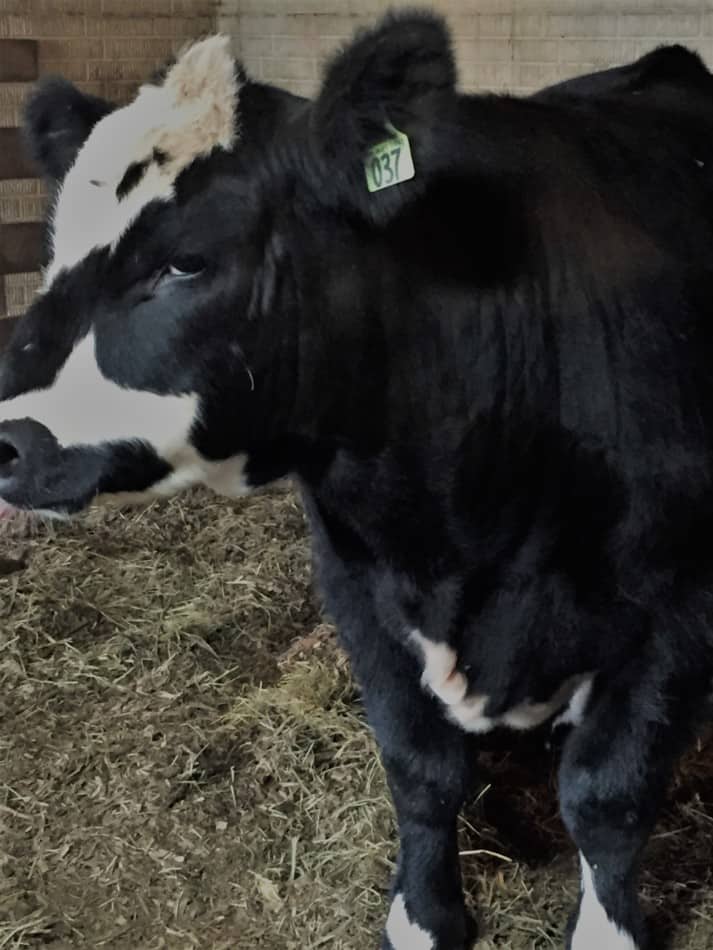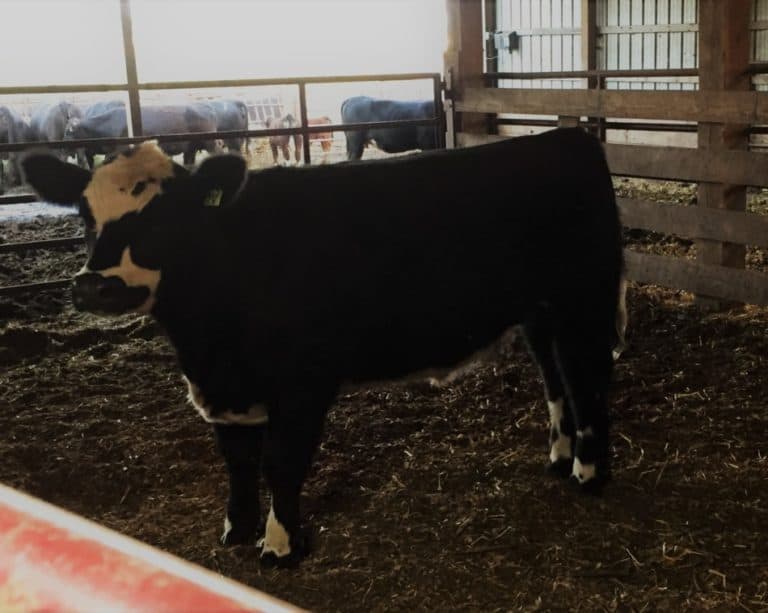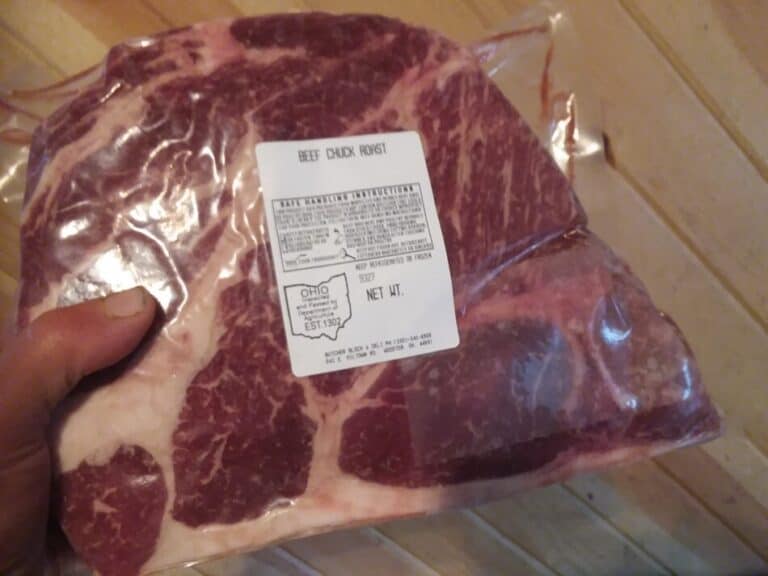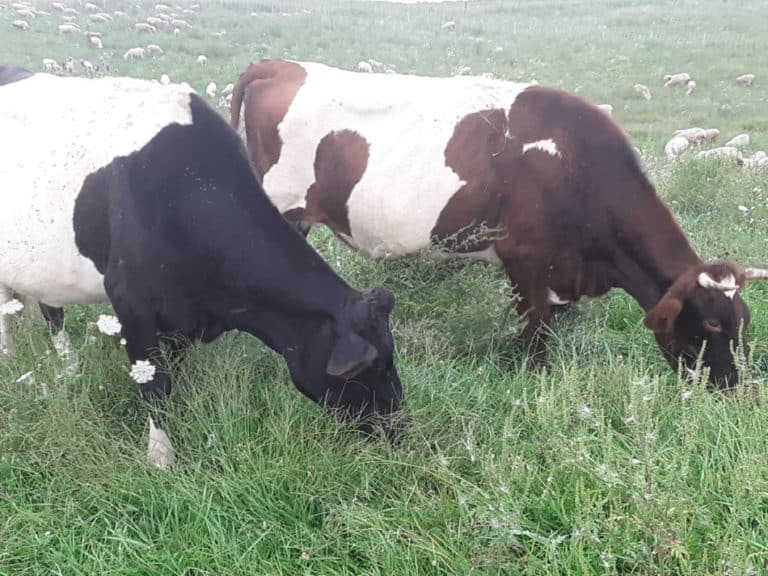Reading A Cattle Market Report: The Basics You Need To Know
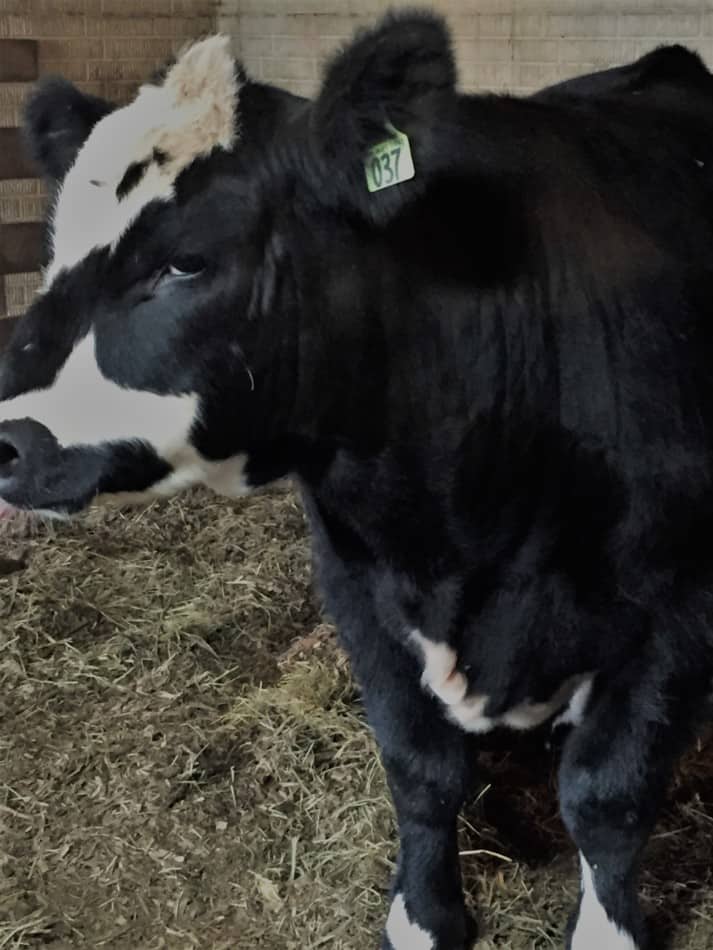
At first glance, a cattle market report is a confusing jumble of numbers!
No need to worry! Once you understand the way it’s written, it makes sense and provides you with quite a bit of information.
A market report categorizes cattle by weight, condition and/or purpose and lists the prices that the cattle in each category sold for at the last auction.
A market report is a useful tool to help you determine what you can expect to get from your cattle when you sell them.
Buying Your Beef Herd will go over the things you need to keep in mind when purchasing your cattle, including what you can expect to spend.
It can also be used to consider trends in prices regarding the season or what weight to reach with your calves before you sell them.
Feeding Your Beef Cattle will help you figure up the hay you’ll need to have on hand to feed your herd for the winter.
In our area, Ohio, we have multiple auctions to choose from that have weekly sales. How Livestock Auctions Work will give you the scoop on selling through an auction barn.
Each auction seems to have a type of cattle that sell better there, so it only makes sense to match what you have to the place where you think it will bring the most money.
Market report information for private sales
Even if you are doing private sales of beef animals, it is always a good idea to know the local prices to make sure you are charging enough for your animals.
Maybe you decide to set your price at the farm a bit over local auction price, good for you.
An animal that has a lower stress life is more valuable, especially if it will be kept to grow out at the new farm.
However you decide to price your cattle you need to know the current values in the market report.
Why Are Some Ranchers Now Selling More Beef Direct To Customers? is an article in Texas Standard by Michael Marks that interviews a few ranchers who have started direct beef sales to keep more control over their income.
Market report vs. market outlook
It should be noted that cattle market outlook is not the same thing as the market report.
The cattle market outlook is a guess at the future prices of cattle.
Good information to keep in the back of your mind, but be sure to keep your focus on actual prices for animals sold to keep focus on your local cattle market.
Listed categories of cattle sold will differ
Your local auction barn will list out the categories of livestock that most commonly sell there each week.
Our area of Ohio has a mix of both dairy and beef cattle in addition to quite a few sheep, goats, and pigs. So auction reports around here have a wide variety of animal species but not too many categories per species.
Areas of the country that are nearly all beef cattle at the auction list out the categories quite differently than areas with mixed livestock.
Once you look at the reports from the predominantly beef cattle raising areas of Ohio the categories change to reflect the needs of the area and to sensibly divide out the listings of the animals that come through the sale weekly.
Below is a table listing out a comparison of the selling categories for cattle at two weekly auctions here in Ohio.
It is easy to see that these two auction barns have a very different focus regarding cattle.
Neither is better than the other, it is just a reflection of what comes through the sale and what categories the auction house thinks will be useful to customers.
| Mixed Livestock Auction (cattle section only) | Predominantly Beef Cattle Auction (cattle section only) |
| fat cattle | fed cattle |
| choice colored | choice steers and heifers |
| good colored cattle | good steers and heifers |
| choice Holstein steers | commercial cows |
| good Holstein fats | canners and cutters |
| slaughter bulls | butcher bulls |
| 1000-1500# | bred cows |
| 1500-2000# | cow/calf pairs |
| 2000# & up | medium & large frame heifers |
| cull cows | 200-300# |
| good/high dress | 300-400# |
| medium to good | 400-500# |
| fair to medium | 500-600# |
| light/thin | 600-700# |
| beef/colored cows | 700-800# |
| feeders | 800# & up |
| colored steers/heifers | medium & large frame steers & bulls |
| Holstein steers | 200-300# |
| calves | 300-400# |
| top 40 Hol. bull calves | 400-500# |
| back to farm Hol. bulls | 500-600# |
| 90-120 lbs. | 600-700# |
| good | 700-800# |
| back to farm Hol. heifers | 800# & up |
| 90-120 lbs. | Hol./Jersey steers |
| crossbred bulls | |
| crossbred heifers |
How to read the cattle market report
The market report is sectioned off into categories to keep similar animals together, so the first step is to find the category that fits what you are looking for.
Use the market report to determine feeder steer prices
Let’s say you are looking for a few feeder steers. A feeder steer is a male calf that has been castrated and weaned, so he doesn’t his mom anymore and is eating well on his own.
A feeder steer is a calf you take home to add weight to then butcher yourself or sell as a finished steer for someone else to butcher.
At the mixed livestock auction your choices are colored steers or Holstein steers. How big are they? Well you just have to see when they come through the sale ring.
At the “beef country” auction you have many more choices ranging from 200-800# or more.
Most people would figure the rate of gain for a steer in their area, then figure how many days they want to keep it and decide accordingly.
Some people with extra acreage in pasture want a few steers to eat the grass off in the summer and then be sold again in the fall, minus the one they keep for themselves to eat.
For instance, take the growing season of your area here we can figure 180 days.
Now if you figure your feeders will gain 1.5 pounds of weight per day each on grass that is 270 pounds of gain each.
So whatever you want the finishing weight to be for your freezer beef to be the feed needs to be 270 pounds less than that if you only want the steer for the summer and on grass only.
180 days x 1.5 #/day =270 pounds of gain/steer
Example: 900# desired butcher weight-270# of gain=630 #steer to buy at beginning of the summer
There are tons of options here: keep the steers longer so some hay feeding will be required, feed grain for faster gains and/or butcher the steer at smaller size.
Buying At The Livestock Auction goes over the things you need to do and avoid doing when you are a beginner auction buyer.
How to figure out the price per steer
Generally speaking an animal that is kept as breeding stock is sold by the head, meaning the price listed is the total price.
An example for the would be the cow/calf pair listed in the predominantly beef cattle auction.
The pair sold as one unit for a total price of $760.00. The report has listed $760.00 and that would have been the bid during the auction.
Contrast this to a calf that sells by weight.
Let’s look again at the beef cattle auction but this time in the feeder section.
We’ll choose 400-500# steers. The numbers listed here are 400-500#- 12 the the price range of 75.00-172.00.
Here is the layout of one specific line of the market report to use as an example for figuring prices:
| Category -steers by weight | low price | high price |
| 400-500#-12 | 75.00 | 172.00 |
The first set of numbers (400-500#- 12) means that there were 12 head of steers that weighed between 400 and 500 pounds at this sale.
The second set of numbers (75.00-172.00) lists the price per 100 pounds (cwt) of live weight.
This means that steers in this weight range sold for anywhere from $75.00-$172.00 per 100 pounds. (The steers are weighed right before they are sold to get the live weight.)
If the steer you are considering weighs 450 pounds it could have brought anywhere from $337.50-$774.00 at these prices.
Here is the math:
Low price: 450#steer divided by 100 pounds=4.5 cwt x $75.00=$337.50 each
High price: 450#steer divided by 100 pounds=4.5 cwt x $172.00=$774.00 each
Once you spend a little time learning to read a market report you will start to notice trends and seasonality of price fluctuations.
Look back at the reports from a few weeks ago leading up to the current prices and from last year at this time to give you a better idea of what you should expect.
Most cattle prices are cyclic, meaning there will be predictable changes in overall prices, higher prices as certain times of the year and lower prices at other times, in a normal year.
Knowing the current cattle market report prices will keep you informed of the price trends, which is useful information for both buyers and sellers of cattle.
Once you get the numbers figured out, you are going to want to be familiar with the things you need to look for to purchase healthy stock.
What To Look For When Purchasing Livestock is another article I wrote that will get you started.
Related Questions
What does cwt mean in cattle prices?
Cwt is an abbreviation that means price per one hundred pounds of animal.
How are cattle prices determined?
Cattle prices are based on supply and demand (higher demand equals a higher price), in addition to the quality of the animal.
High quality animals are always worth more than low quality animals in the same peer group.
